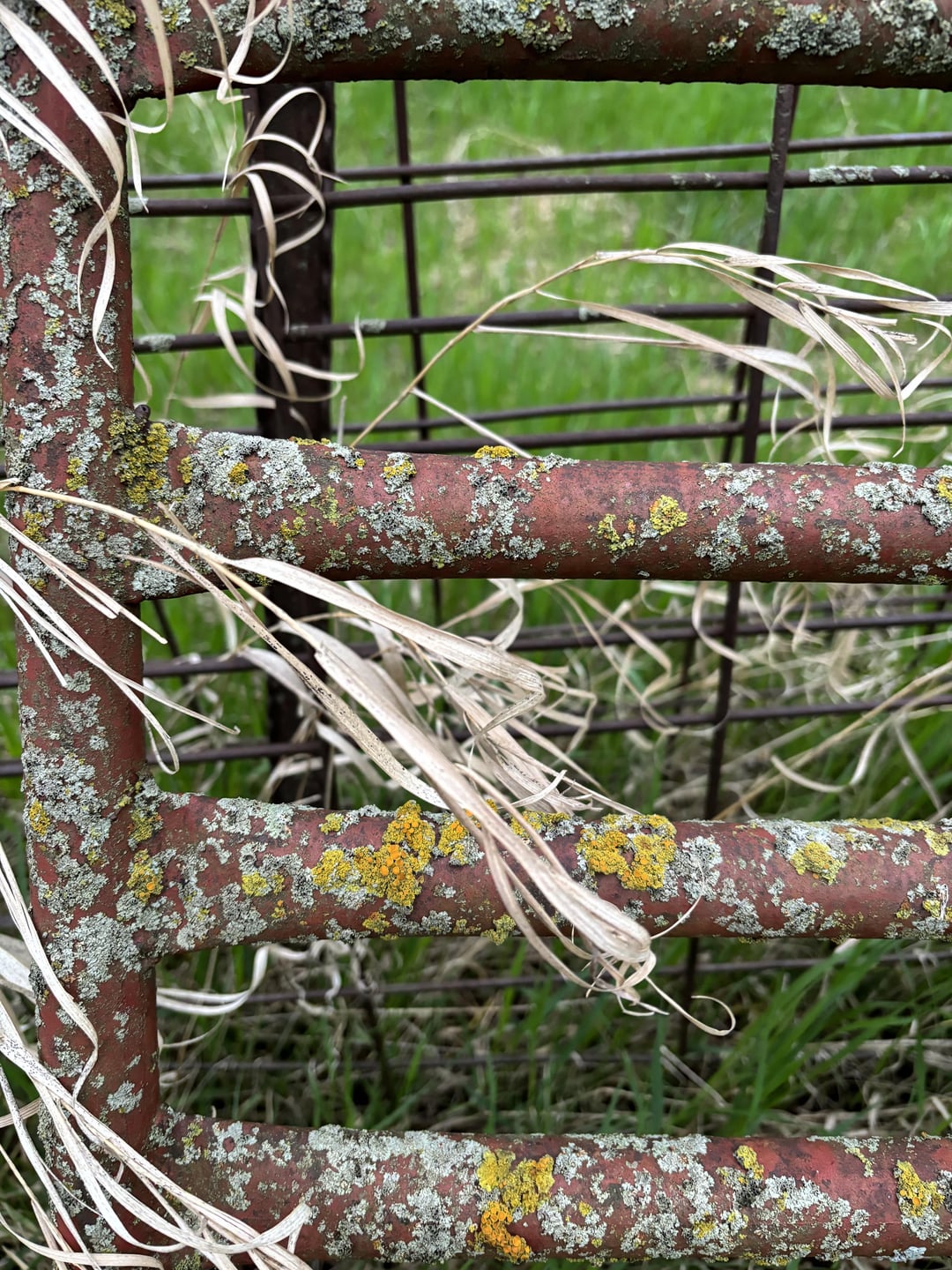How To Build A Thriving Living Fence: A Complete Guide

Table of Contents
Choosing the Right Plants for Your Living Fence
Selecting the appropriate plants is crucial for a successful living fence. The wrong choice can lead to a struggling, unsightly barrier, while the right plants will thrive and create a beautiful, robust natural fence.
Consider Your Climate and Soil
Your local climate and soil conditions are paramount in determining which plants will flourish.
- Research plants native to your region: Native plants are adapted to your local climate, requiring less water and maintenance. They also support local ecosystems.
- Test your soil's pH: A simple soil test will reveal your soil's pH level. Most plants thrive in a slightly acidic to neutral pH range (6.0-7.0). Amend your soil with lime to raise the pH or sulfur to lower it, if necessary.
- Consider sunlight exposure and rainfall: Different plants have different sunlight and water requirements. Choose plants that match the conditions of your chosen location. For example, a north-facing location might require shade-tolerant plants.
- Microclimate Matters: Your microclimate plays a significant role. A spot that's sheltered from wind will have different requirements than an exposed location. Consider factors like wind exposure, drainage, and proximity to buildings or other structures.
Selecting Plant Species for Your Living Fence
Numerous plant species are suitable for creating a living fence. The best choice depends on your desired aesthetic, growth rate, and maintenance level.
- Evergreen vs. Deciduous: Evergreens provide year-round screening, while deciduous plants offer seasonal changes in color and texture.
- Fast-growing vs. Slow-growing: Fast-growing options offer quick results, while slow-growing plants might require more patience but often need less frequent pruning.
- Mature Height and Width: Consider the mature size of the plants to ensure they won't outgrow their space or become too wide.
- Popular Living Fence Plant Species:
| Plant Species | Growth Rate | Mature Height (ft) | Sunlight Requirements | Hardiness Zones |
|---|---|---|---|---|
| Arborvitae | Moderate | 10-60 | Full sun to part shade | 2-8 |
| Holly | Moderate | 15-30 | Full sun to part shade | 5-9 |
| Privet | Fast | 8-15 | Full sun to part shade | 5-9 |
| Leyland Cypress | Fast | 40-70 | Full sun | 7-10 |
| Hawthorn | Moderate | 15-30 | Full sun to part shade | 4-8 |
Planning and Preparation for Your Living Fence
Thorough planning and preparation are key to a successful living fence.
Designing Your Living Fence Layout
Visualizing your living fence before planting is crucial for a pleasing and functional result.
- Desired Height and Width: Determine the height and width of your fence based on your needs and the available space.
- Spacing Between Plants: Allow sufficient space for each plant to grow to its mature size without overcrowding. Overcrowding can lead to competition for resources and weaker growth.
- Aesthetic Considerations: Think about the overall look you want to achieve. Consider variations in plant height and texture for a more dynamic and interesting living fence.
- Fence Design: A simple straight line is easiest, but curved lines or combinations of different plants can create a more visually appealing living fence.
Preparing the Ground for Planting
Proper ground preparation ensures optimal plant growth and a long-lasting living fence.
- Clear the Area: Remove weeds, grass, rocks, and any other debris from the planting area.
- Loosen the Soil: Till or loosen the soil to a depth of at least 12 inches to improve drainage and root penetration.
- Amend the Soil: Incorporate compost or other organic matter to improve soil fertility and drainage.
- Soil Health is Key: Healthy soil is vital for healthy plants. Addressing soil compaction and nutrient deficiencies beforehand sets your living fence up for success.
Planting and Maintaining Your Living Fence
Planting and ongoing maintenance will determine the longevity and beauty of your living fence.
Planting Techniques for a Thriving Living Fence
Proper planting techniques are crucial for establishing strong, healthy plants.
- Digging Holes: Dig holes that are twice as wide and as deep as the plant's root ball. This allows the roots to spread easily.
- Handling Seedlings/Saplings: Handle young plants gently to avoid damaging their roots.
- Watering: Water thoroughly after planting and regularly during the establishment phase, ensuring the soil remains moist but not waterlogged.
- Mulching: Apply a layer of mulch (wood chips, straw) around the base of the plants to retain moisture, suppress weeds, and regulate soil temperature.
Ongoing Care and Maintenance of Your Living Fence
Regular maintenance is essential for a thriving living fence.
- Watering: Water deeply and regularly, especially during dry periods. Reduce watering frequency as plants mature.
- Fertilizing: Fertilize annually in early spring using a balanced fertilizer specifically formulated for shrubs or trees.
- Pruning: Prune regularly to maintain the desired shape and size of your living fence and to remove dead or diseased branches.
- Pest and Disease Control: Monitor your plants regularly for signs of pests or diseases and take appropriate action if necessary. Consider natural pest control methods first.
The Benefits of a Living Fence
Living fences offer numerous advantages over traditional fences.
Environmental Advantages
- Wildlife Habitat: Living fences provide food and shelter for birds, insects, and other wildlife.
- Erosion Control: The roots of the plants help to stabilize the soil and prevent erosion.
- Carbon Sequestration: Plants absorb carbon dioxide from the atmosphere, helping to mitigate climate change.
Aesthetic Appeal
A living fence adds a touch of natural beauty to your property, enhancing its curb appeal. The varied colors, textures, and seasonal changes create a visually interesting and dynamic landscape element.
Cost-Effectiveness
While the initial investment in a living fence may be slightly higher than a traditional fence, the long-term costs are often lower due to reduced maintenance requirements. You'll save on the cost of replacing a traditional fence over time.
Conclusion
Creating a thriving living fence adds beauty, functionality, and environmental benefits to your property. By carefully selecting plants, preparing the ground, and implementing proper planting and maintenance techniques, you can enjoy a stunning and sustainable natural boundary for years to come. Start planning your own living fence project today and experience the many rewards of this eco-friendly landscaping solution! Remember to choose the right plants for your climate and follow the steps outlined above to ensure a successful and beautiful living fence, a natural hedge, or a vibrant green screen.

Featured Posts
-
 Second Arrest In Alleged New York Cryptocurrency Kidnapping Case
May 29, 2025
Second Arrest In Alleged New York Cryptocurrency Kidnapping Case
May 29, 2025 -
 Arcane League Of Legends 4 K Steelbook Amazons 50 Off Sale
May 29, 2025
Arcane League Of Legends 4 K Steelbook Amazons 50 Off Sale
May 29, 2025 -
 South Australian Farmers Battle Drought And Kangaroo Overgrazing
May 29, 2025
South Australian Farmers Battle Drought And Kangaroo Overgrazing
May 29, 2025 -
 Space X Falcon 9 28 Starlink Satellites Launched In 28th Successful Mission
May 29, 2025
Space X Falcon 9 28 Starlink Satellites Launched In 28th Successful Mission
May 29, 2025 -
 Space X Starship Launch Faa Safety Guidelines And Air Traffic Restrictions
May 29, 2025
Space X Starship Launch Faa Safety Guidelines And Air Traffic Restrictions
May 29, 2025
Latest Posts
-
 Braintree And Witham Times Kelvedon Mans Guilty Plea In Animal Pornography Case
May 31, 2025
Braintree And Witham Times Kelvedon Mans Guilty Plea In Animal Pornography Case
May 31, 2025 -
 Birmingham Supercross Round 10 2025 Final Results
May 31, 2025
Birmingham Supercross Round 10 2025 Final Results
May 31, 2025 -
 How Provincial Governments Can Speed Up Homebuilding
May 31, 2025
How Provincial Governments Can Speed Up Homebuilding
May 31, 2025 -
 Final Preparations Complete For Down East Bird Dawgs First Game
May 31, 2025
Final Preparations Complete For Down East Bird Dawgs First Game
May 31, 2025 -
 Updated Results Birmingham Supercross Round 10 2025
May 31, 2025
Updated Results Birmingham Supercross Round 10 2025
May 31, 2025
